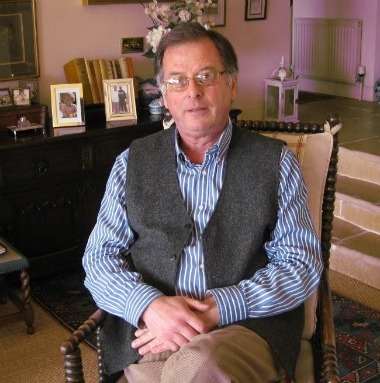Editor’s Note: Tom Finnigan is the son of Irish immigrants who moved to England, where he was born. This is the first of a series of essays he wrote about being an immigrant of a different sort: an Englishman of Irish descent who emigrated to Ireland–to the country’s northern most point, Malin, County Donegal.
We came to Malin and built a house in Goorey, on rocks above Trawbreaga Bay. My neighbor Connel Byrne calls it Ard na Si and tells us that Niall – king of all the fairies of Inishowen – holds court here. Barney Doherty used to come for gooseberries. Enid Stewart remembers it as a place full of hazel bushes, where fishermen came for wands to make lobster pots. She came for nuts when she was a child.
‘You’re nuts!’ shouted my father in Manchester when we announced our plans.
He remembers the poverty of Mayo in 1930; how De Valera suggested that he dance at the crossroads; how Doctor Walshe demanded a pound note before he would mount a trap in Ballyhaunis and visit my sick grandmother. Donegal, insisted my father, is full of rain and wind. The women wear shawls and fishermen drown.
“If ye go back and show an English number plate, some eejit from Derry will shoot ye.”
He couldn’t conceive of anyone choosing to live here.
And there’s the point. We have chosen. My father’s generation did not have choice. The Inishowen of holiday homes and art studios is inconceivable to the mind of my mother-in-law, the eldest of 13 children from Ballygorman in Malin Head. She has lived in Manchester for 70 years. When she comes to visit us, she doesn’t watch light stream through cloud. She has nothing to say about how mist hovers. She marvels at lights on the Isle of Doagh, the spread of houses in Carndonagh. Her memory is of blackness at night, the lighthouse at Inistrahull flashing, oil lamps smelling of kerosene. Her talk is of neighbours and where they went–to the tunnels in Glasgow, the towers of Boston.
And we?
We observe the light. We read John McGahern or something by Seamus Heaney. We identify birds–herons rigid on the shore, wood pigeons flapping, oystercatchers piping. We wonder if we shall cook scallops from Malin Head or some pasta from Sainsbury’s. We listen to Lyric FM or watch a DVD, put a bottle of Frascati in the fridge and rustle the business pages of the Irish Times. We are anxious about our SSIs. We lobby for broadband and sing in church. We e-mail Holland and Singapore, sell in Ballsbridge and Cork. We book a flight to Stanstead, then walk on Five Fingers strand, amazed at the light.
The children of the Wild Geese are back. We have sold our English property and returned to claim our heritage. We talk of Colmcille, visit Gartan and Derry, discuss the peace process. In Malin, once the demesne of the Harveys, Gaels with broad English vowels oust Planters with rich Irish consanants. Our Jeeps climb Knockamany and frighten the goats. We learn Irish, join writing groups, take up water colours.
On Five Fingers strand, wind lashes the Atlantic. Gulls scream. I raise my binoculars and scan the Bar Mouth. A sail billows, then another. Oars flash. Steel glints.
The Vikings are back.
Editor’s note: Who are the Wild Geese? Read more about them here.

